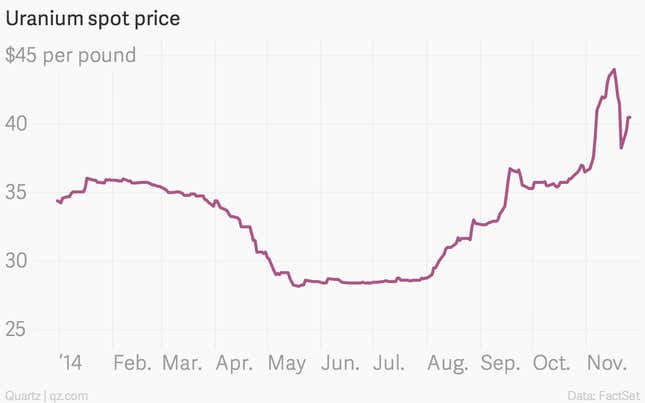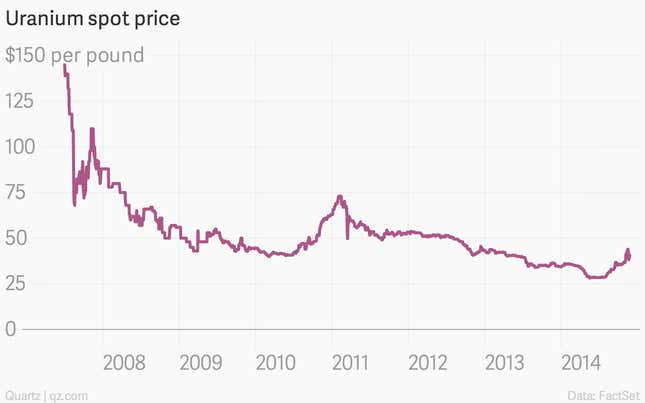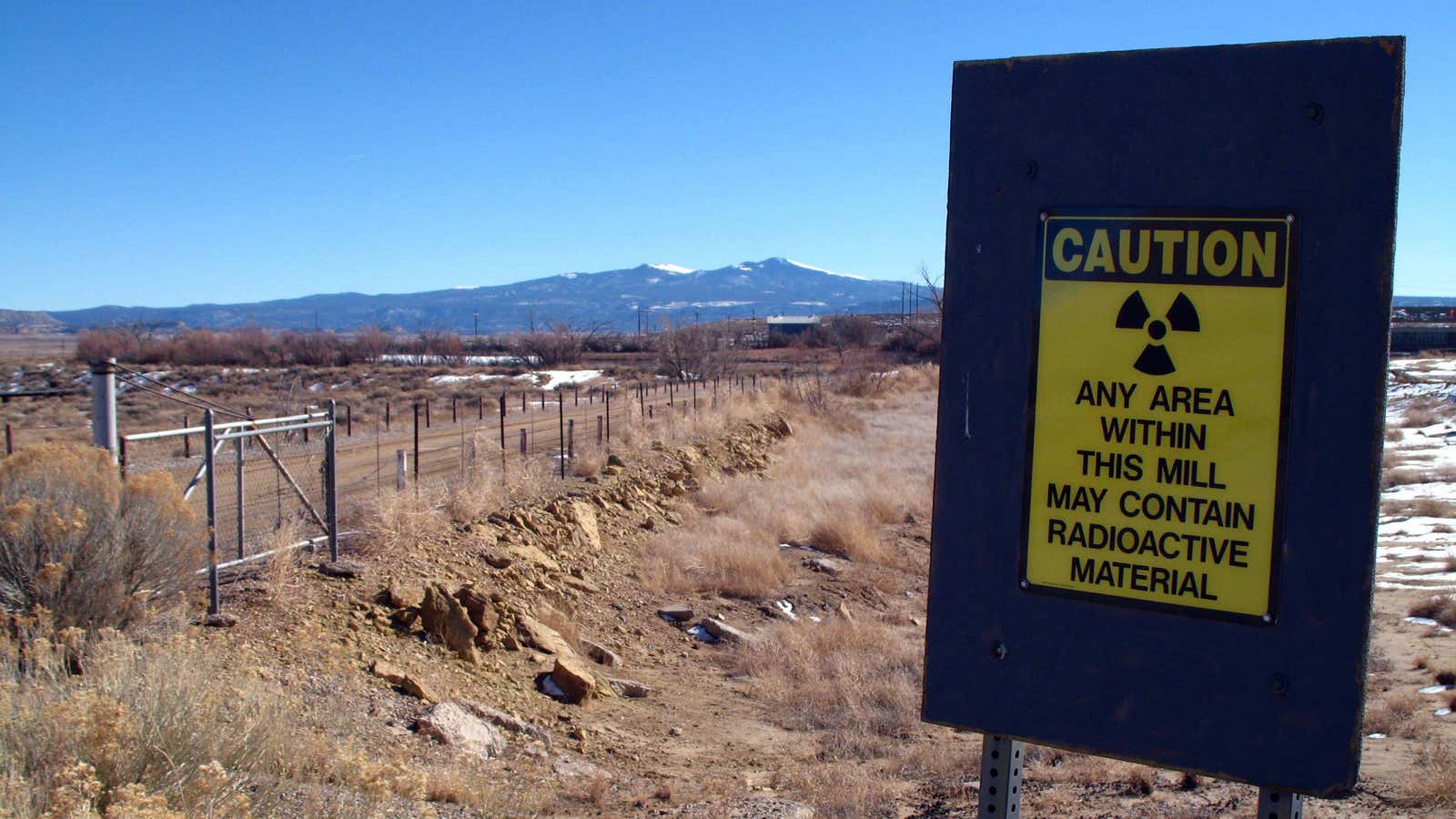The last time we checked in on the uranium market, in May, prices for the radioactive mineral were languishing at historic lows. Mining companies were cutting production, shuttering sites, and laying off workers.
The past six months have seen a sharp turnaround, with the spot price of the yellow stuff up by more than 40% from its mid-year low:

This means that uranium is the best-performing energy source so far this year, according to Bloomberg, handily beating coal, gas, and oil. The rally is driven by prospects of Japan restarting reactors, idled since the Fukushima tsunami disaster in 2011, and China bringing a huge number of plants online.
But as with handling the mineral itself, investors dabbling in this market need to be very careful. Big swings this month have seen prices lurch up and down by more than 10% in a matter of days.
Over the long run, uranium has been a terrible bet in recent years, with the current price of around $40 per pound well below the level reached before the Fukushima nuclear accident, itself a shadow of the $100-plus prices fetched before the global financial crisis. The recent run-up doesn’t look so great when you zoom out:

Although analysts reckon that the future path of uranium prices will be gradually upwards, bolstered by governments’ commitments to cutting carbon emissions, it will be some time before higher demand eats into the existing glut of supply. By most estimates, prices will need to rise by 75% or more to encourage miners to invest in new production.
